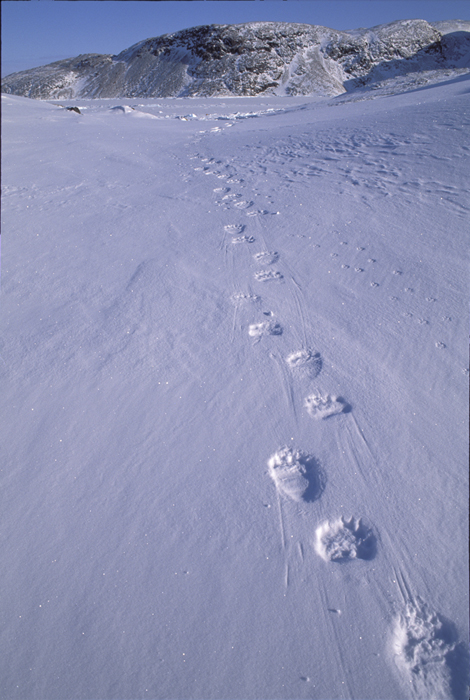Scientists who study polar bears have a difficult job. Fitting a satellite collar on them requires tranquilizer dart guns, which can harm or stress the endangered animals. And it’s both expensive and dangerous for the researcher.

A polar bear checks out a visitor. Photo: Shutterstock
Luckily, scientists have a new method. All the researchers need are the prints that the great bears leave behind in the snow as they amble across the Arctic. Two studies, one released this summer and one last week, explain that bears leave behind their DNA in these prints. The cold preserves the genetic material, making it easier to study.

Polar bears leave their DNA behind in their tracks. Photo: Jerry Kobalenko
Skin cells reveal all
The first study detailed how the researchers took the top layer of snow from the prints, then extracted nuclear DNA from the skin cells left behind. From 130 prints in the snow, they identified six individual bears, five males and one female. It eliminates the need to dart the bears — no doubt a relief both for the bears and those tasked with doing it.

A Eurasian lynx. Photo: Shutterstock
The second, most recent study, takes this method even further. The team extended the method to other species, including the Eurasian lynx and the snow leopard.
After collecting the top layer of snow, they melted and filtered the samples. They could isolate DNA in 87.5% of wild polar bear tracks, 59.1% of lynx tracks, and all the animals from wildlife parks in Scandinavia.
As with the polar bears, they were able to identify several individuals. For the captive animals, they also compared this data to hair, saliva, and mucus samples. This confirmed that the tracks gave accurate genotypes.

A snow leopard. Photo: Shutterstock
There are huge benefits to this non-invasive method.
“You can get much more data than you otherwise do in an entire season,” said co-author Micaela Hellström.
It could eventually be used to determine population size and which individuals are related. It could even tell us more about behavior.
“We hope this method will be taken up by the polar bear research community…as a new way to collect information on polar bears,” said co-author Melanie Lancaster.






